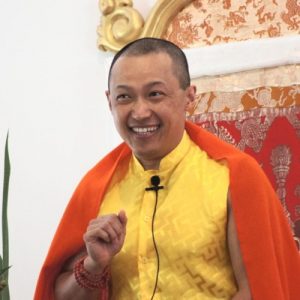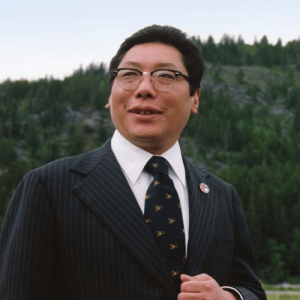The word ‘lineage’ means a line of instruction/transmission that has been passed down from teacher to disciple throughout history.
 Shambhala Buddhism is a path towards realising bravery, dignity, and kindness, with an emphasis on the need for cultivating enlightened, or uplifted society, free from personal and national ego-centrism. It is inspired by the teachings of the Buddha, as well as modern teachers trained in the Kagyü and Nyingma schools of Tibetan Buddhism: Chögyam Trungpa Rinpoche and Sakyong Jamgön Mipham Rinpoche. It draws on a wide variety of contemplative traditions and offers a comprehensive path of mindfulness and awareness meditation practice and study, as well as other contemplative disciplines.
Shambhala Buddhism is a path towards realising bravery, dignity, and kindness, with an emphasis on the need for cultivating enlightened, or uplifted society, free from personal and national ego-centrism. It is inspired by the teachings of the Buddha, as well as modern teachers trained in the Kagyü and Nyingma schools of Tibetan Buddhism: Chögyam Trungpa Rinpoche and Sakyong Jamgön Mipham Rinpoche. It draws on a wide variety of contemplative traditions and offers a comprehensive path of mindfulness and awareness meditation practice and study, as well as other contemplative disciplines.
The premise of the Shambhala tradition is that basic human goodness and wisdom transcend any one culture or religion. From this point of view, it is a secular, non-religious approach, which embodies essential values and principles that have been recognised by many cultures throughout history.
Sakyong Mipham Rinpoche
 Sakyong Jamgön Mipham Rinpoche, the spiritual head of the Shambhala Buddhist Lineage, founded Dechen Chöling in 1994. He is the ‘Dharma heir’ of his father, the Vidyadhara, Chögyam Trungpa Rinpoche, who was instrumental in bringing Buddhism to the West.
Sakyong Jamgön Mipham Rinpoche, the spiritual head of the Shambhala Buddhist Lineage, founded Dechen Chöling in 1994. He is the ‘Dharma heir’ of his father, the Vidyadhara, Chögyam Trungpa Rinpoche, who was instrumental in bringing Buddhism to the West.
Having grown up in both North America and India, the Sakyong creates a unique bridge between East and West. He holds the Mukpo family lineage, descending from the Tibetan warrior-king, Gesar of Ling and he also holds the Kagyü and Nyingma lineages. He is considered to be the incarnation of Mipham the Great, who is revered in Tibet as an emanation of Manjushri, the bodhisattva of wisdom. Rinpoche is the author of the best-selling books, Turning the Mind Into an Ally and Ruling your World. Master of meditation, he is also an accomplished poet, artist and athlete.
Chögyam Trungpa Rinpoche
 Chögyam Trungpa Rinpoche, holder of the Kagyü and Nyingma lineages of Tibetan Buddhism, founded the Shambhala Buddhist lineage.
Chögyam Trungpa Rinpoche, holder of the Kagyü and Nyingma lineages of Tibetan Buddhism, founded the Shambhala Buddhist lineage.
Born in Tibet in 1939, Trungpa Rinpoche was recognised at an early age as a tülku, or reincarnated teacher. He fled Tibet in 1959, and four years later went to Oxford University in England. From that time until his death in 1987, he worked tirelessly to bring the living teachings of meditation to the Western world, establishing several major practice centres, over one hundred meditation centres, and Naropa University.
Author of dozens of books, Trungpa Rinpoche is renowned today for his remarkable ability to present the highest essence of Tibetan Buddhist teachings in a form accessible to the West.
